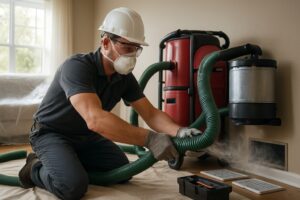
Behind every smooth engine start is a small yet powerful component, the starter motor. Whether in vehicles, generators, or heavy machinery, the starter motor plays a critical role in initiating the combustion process that powers engines.
In this blog, we’ll explore what a starter motor is, how it works, the types available, common issues, and maintenance tips to keep it performing reliably.
What Is a Starter Motor?
A starter motor is an electric motor that turns the engine’s crankshaft to initiate the combustion process. It provides the initial rotation necessary for the engine to begin operating under its power.
Without a functional starter motor, an internal combustion engine cannot start on its own.
How Does a Starter Motor Work?
When you turn the key or push the start button, the following process occurs:
-
Electrical Signal – The battery sends a current to the starter solenoid.
-
Engagement – The solenoid pushes the starter gear (Bendix gear) into engagement with the engine’s flywheel.
-
Cranking – The electric motor spins the flywheel, turning the engine’s crankshaft.
-
Combustion Starts – Once the engine fires and starts running, the starter motor disengages automatically.
The entire process takes only a few seconds but is vital to the operation of any internal combustion engine.
Key Components of a Starter Motor
-
Electric Motor – Provides torque to turn the flywheel.
-
Solenoid – Acts as a switch and moves the Bendix gear into position.
-
Bendix Gear – A gear that engages and disengages from the flywheel.
-
Armature and Brushes – Inside the motor, responsible for electrical conduction and rotation.
-
Commutator – Directs the flow of electricity through the motor windings.
Types of Starter Motors
-
Direct Drive Starter Motor
-
Traditional design
-
Simple but larger and heavier
-
Common in older vehicles and diesel engines
-
-
Gear Reduction Starter Motor
-
Uses gears to increase torque
-
Smaller, lighter, and more efficient
-
Common in modern vehicles and compact engines
-
-
Inertia Starter Motor
-
Uses centrifugal force to engage gears
-
Simpler design, fewer moving parts
-
Less common today
-
-
Pre-Engaged Starter Motor
-
The solenoid moves the gear before power is applied
-
Reduces wear on flywheel teeth
-
Common in modern engines
-
Common Starter Motor Problems
Starter motors are generally durable, but issues can arise from wear, electrical problems, or poor maintenance.
Typical symptoms of a failing starter motor:
-
Clicking sound when turning the key
-
Engine won’t crank or starts intermittently
-
Grinding noise during starting
-
Slow cranking despite a good battery
-
Smoke or burning smell from the starter area
Common causes:
-
Worn-out brushes or solenoid
-
Faulty wiring or poor connections
-
Damaged Bendix gear
-
Weak or dead battery (often misdiagnosed as starter failure)
Starter Motor Maintenance Tips
To maximize the life of a starter motor:
-
Keep electrical connections clean and tight
-
Check battery voltage regularly
-
Inspect for oil or dirt buildup near the motor
-
Replace worn solenoids or brushes as needed
-
Avoid repeated cranking, which overheats the starter
In commercial or high-usage engines, scheduled inspections can prevent failure and reduce downtime.
Starter Motor in Modern Technology
In modern vehicles, the starter motor may be integrated into start-stop systems, which automatically shut off the engine at idle and restart it when needed. These systems use enhanced starters designed for frequent use, often supported by dual-motor setups or starter-generators in hybrid vehicles.
In industrial and marine applications, pneumatic or hydraulic starter motors may be used where electric systems are less practical due to explosion risks or remote locations.
Final Thoughts
Though small in size, the starter motor plays a vital role in bringing engines to life. Understanding its operation, components, and maintenance needs helps ensure reliable performance—whether you’re maintaining a fleet of trucks, operating heavy machinery, or working under the hood of a car.




